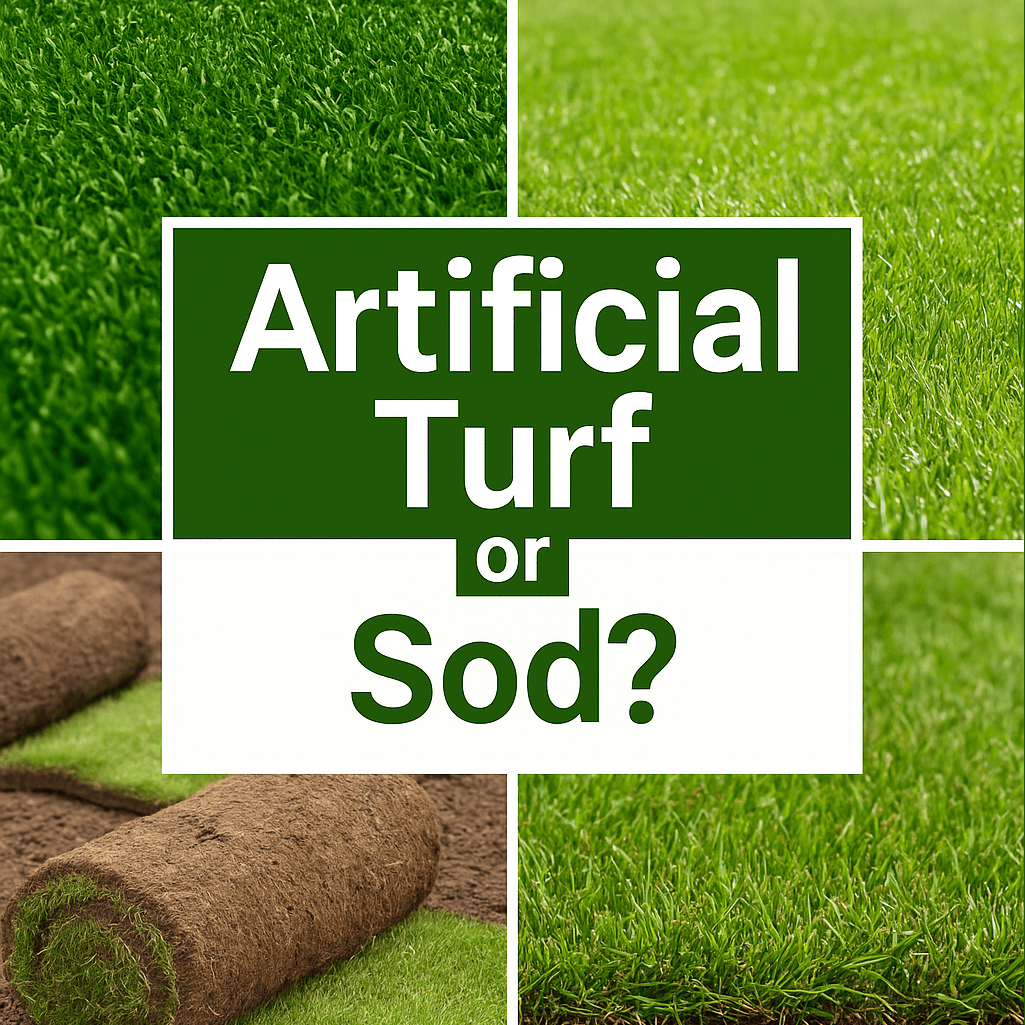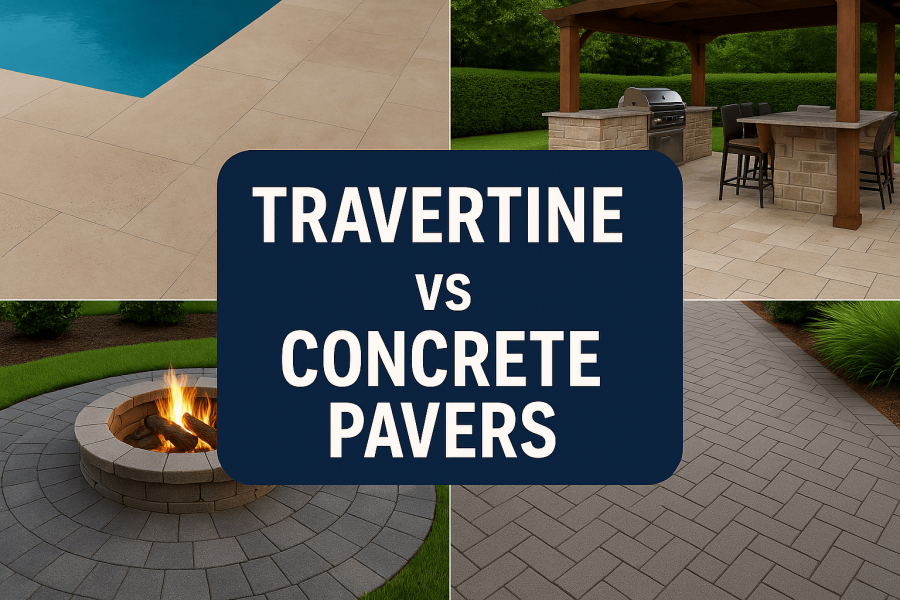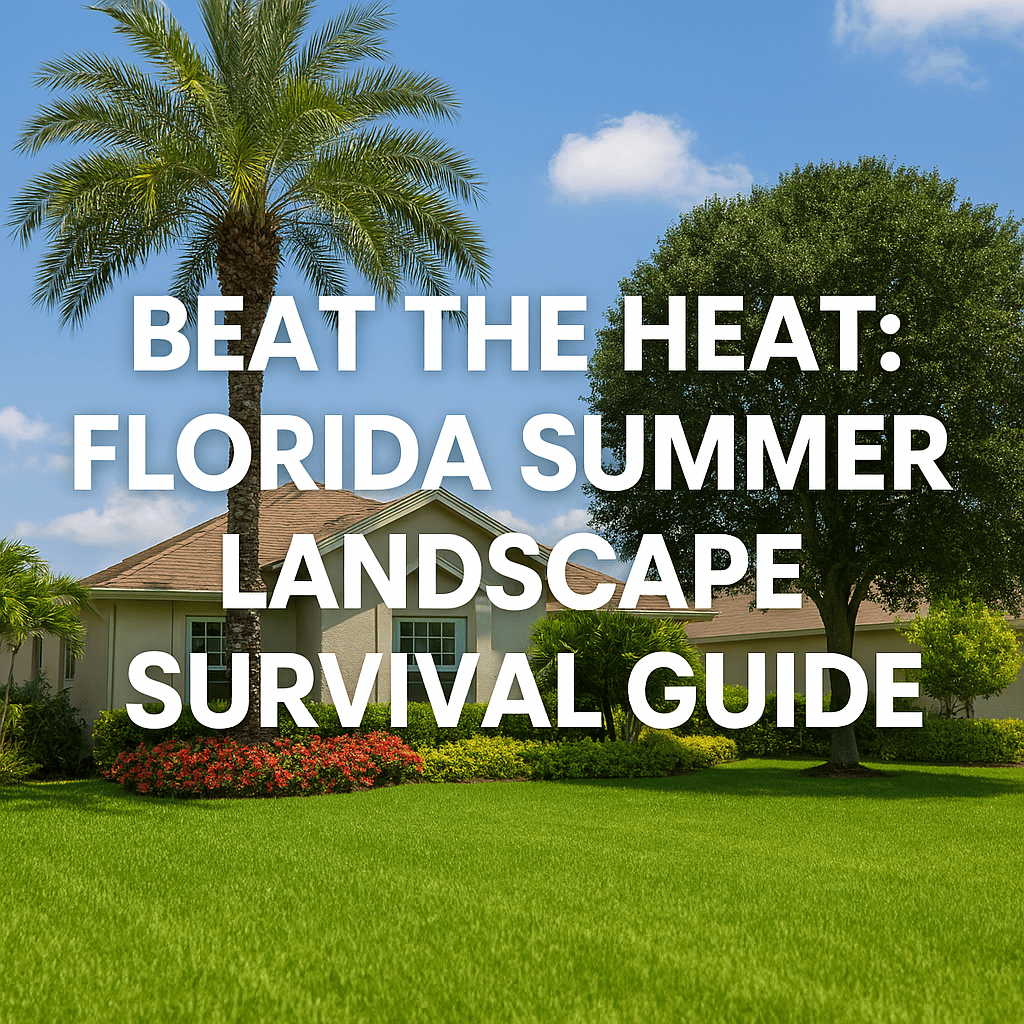- >
How to Pet Proof Your Yard
- By: Cheli Scott
- Date: Dec 22 2022
Similar Articles
Artificial Turf vs Sod for Lawns, Backyards & DIY Makeovers
Thinking about artificial turf or sod? Discover the pros and cons of each—from cost and maintenance to durability and pet-friendliness—so you can choose the best option for your lawn or backyard project.
Travertine vs Concrete Pavers for Florida Pool Decks, Patios, Fire Pits & More | bhild
Compare travertine and concrete pavers for Florida pool decks, patios, and driveways — from heat retention and slip resistance to cost, maintenance, and curb appeal.
Beat the Heat: Florida Summer Landscape Survival Guide
Beat the Florida heat with smart summer landscaping. From drought‑tolerant plants to shaded retreats, this guide covers designs, materials, and maintenance tips to keep your yard thriving all season long.
How to pet proof your yard
Pet owners often have to choose between a beautiful lawn and their canine’s happiness, so we’ve collected some tips to help you pet proof your yard to keep you and your puppies happy!
Most dog owners use their backyard as an area for their pet to potty and play. This is fun for man’s best friend, but dogs can kill grass, destroy garden beds, and get into things they shouldn’t, making for a very frustrated pet owner.
It’s important for both your dog’s safety and and your sanity to spend some time dog proofing your yard before you let them loose in it.
When planning your garden and backyard there are some things to keep in mind so it can be a safe place for your whole family.
Dealing with Grass
The first thing you think of when you think of your yard is a green lawn. Dogs have a natural instinct to dig, which will leave big ugly craters in your yard and destroy plants. To prepare for this, you can bury chicken wire before you sod. This will stop your pup from digging when they reach it.
Choosing the right sod will also help you and your dog enjoy your outdoor space. Some grasses hold up better to wear and tear than others. If you are choosing sod look into these varieties:
Fescue
Fescue stands up to wear and tell well allowing your pup to play on it without ripping it up. It is an easy to care for grass that is very absorbent, so it handles urine well.
Bermuda
Bermuda has dense roots that can stand up to dog’s play. It is more high maintenance than Fescue, but does well in warm climates.
Kentucky Bluegrass
Since Kentucky Bluegrass grows from rhizomes it doesn’t need reseeding, which makes it great for dog owners. It grows quickly in a thick density, so it quickly repairs itself when damaged. This is a grass that does well in colder climates.
Zoysia
This dense grass is very durable and forms a thick ground cover. It is drought resistant and tolerates heat well. The downside to this grass is that it is slow growing, taking a few years to get established, but is good for a dog run.
Alternative ground cover
No matter what sod you choose, if your dog repeatedly uses the same spot over and over it may turn it yellow.
If you are an observant dog owner you can help your sod out by diluting urine with a garden hose immediately after your dog goes potty, but that doesn’t completely solve the problem.
Alternatively, many home owners choose to skip sod all together and instead use synthetic turf, hardscape, or a mix. Synthetic turf drains well and can be hosed off to prevent stains. It makes a great dog run for a small area if you don’t want to cover your entire lawn with it.
Many dogs like to patrol the borders of your fence, leaving bare patches where the sod has been worn away. You can use hardscape, like pavers, in this area to keep it looking neat. If your dog has a tendency to escape by digging around fences, this will also deter that.
Clover
Clover is not a grass at all, but it does make a soft green, ground cover that stands up to urine, saving you from ugly yellow spots all over your lawn.
It grows like a weed but when used intentionally as ground cover looks very plush and attractive. It doesn’t need to be mowed and tolerates drought, making it very low maintenance.
Use chicken wire or other barriers to dog proof
Dogs love digging in the soft dirt of garden beds so it can frustrating trying to keep them out of them. There are a few different methods you can try to keep your dog out of places they shouldn’t be.
Find a good fence to close them off. For a low cost option you can use stakes and chicken wire to make your own fencing. Wrap tree trunks in chicken wire cages to keep your dog from urinating on them.
You can also consider raised planters and flower boxes so you can still enjoy flowers and edible plants without chasing your pup around.
Some dogs will avoid natural barriers, as well, like prickly plants. If you have rose or thorn bushes, you can line your garden beds with branches. You can also plant marigolds, as dogs do not like their scent.
Dogs (and also rabbits for those concerned) do not like the scent of vinegar. You can buy low acidity, horticulture vinegar to spray around flower beds. You will need to do this frequently and be careful not to get vinegar on plants as it will kill them.
Additionally, you will want to fence off bodies of water like swimming pools or ponds to prevent your dog from playing in or drinking out of them. Puppies run a risk of drowning in even small pools of water so be sure to keep them out of water features and fountains.
In general fences are beneficial to the safety of your dog because they keep your dog safely inside your yard and other dogs and wild animals out. Smaller dogs are in especial danger of being attacked by animals like coyotes in certain areas.
You can choose a chain link fence, plastic, or wooden fence, but keep in mind how high your breed of dog can jump. Most dogs can’t jump higher than a six foot fence. However some german shepards and border collies can.
Dog safe plants
When planning a dog proof yard, you need to be very sure you are not planting harmful plants. Many common decorative and edible plants are poisonous to dogs. It is possible your yard already has toxic plants in it. Some examples are English ivy, hydrangea, and tomato plants. Try to supervise your dog as much as possible so they don’t consume potentially toxic weeds you may have missed.
Research dog safe plants on the ASPCA website, which has a complete list of non toxic plants for dogs, cats, and horses. You may want to examine your entire yard and see if you can identify any you recognize and remove them. Some attractive dog safe flowers include: petunias, zinnias, and african violet. There are plenty of lovely options available that are non toxic plants.
Keep your dog from treated grass or plants
Try to use non toxic lawn products on a yard you are planning on letting your dog play in. Dogs can become sick from rolling in the treated grass and grooming themselves, ingesting these chemicals.
If that’s not possible, keep your dog out of the yard for at least 24 hours after spraying. Also check the labels on fertilizers to find out how long you need to wait until your dog can re-enter the yard after application.
Prevent problem chewing
There are lots of dangerous things in your backyard for your dog to chew on and get into. Problem chewing poses a choking hazard and can cause blockages and splinters.
To keep them from chewing things in your backyard like furniture or your compost bin you can spray it with white vinegar or sprinkle it with powdered mustard. There are also commercial products available like apple bitter spray that will deter chewing.
Keeping your dog supervised and entertained will also help deter chewing.
Maintain your landscape
Whatever kind of landscape your choose, be it grass or others, it’s important to keep it maintained to make your backyard a safe place for your dog.
Mow your lawn to eliminate fleas and ticks on your dog. Also, clean up debris and fallen branches that could be dangerous to your dog.
There are some types of tree branches that you may have in your backyard that are safe for your dog to chew, like willow and poplar branches. Other branches may not be safe and can cause splinters in your dog’s mouth or blockages.
Also regularly pick up rocks, fruits, or other debris lying around your backyard that your dog may want to put in their mouth and can become a choking hazard.
Secure garbage cans
Many of the things in common household trash cans can send your dog to the vet. Batteries, cleaning supplies, rotten food, and other trash can make your dog very sick. Do not overfill cans or leave trash in bags lying around.
You can build fences around trash cans to store them out of the way or place them outside of the fenced area your dog plays in all together. Buy trash cans with sealing lids if you are not able to store your trash can away from this area.
Supervise
Try to supervise your dog as much as possible. Despite our best efforts, your dog can escape and people make mistakes, so it’s best to keep a close eye on them. Small dogs and puppies are at special risk of being preyed upon by birds of prey like eagles.
If you have a doggie door check on your dog frequently to make sure they are still doing okay and aren’t barking at the neighbors.
Your dog will probably be okay if you go in the house for a little while, but don’t leave them out for extended periods of time alone. They tend to get into trouble when left up to their own devices.
It’s our job as dog owner’s to keep them out of danger and spending time with them will keep your dog entertained and out of trouble. Plus, it’s a good excuse to get in the great outdoors with your furry friend.
Enjoy your yard with your dog!
The best part of dog proofing your backyard is getting to spend time with your dog. It is possible to achieve a fun, beautiful, inviting yard and create a safe space for your pup as well.
If you need help with your hardscape, installing turf, or other dog proofing projects consider working with a professional like the ones at bhild.com. Call us today, or fill out our form here for a free estimate on lawn services!












